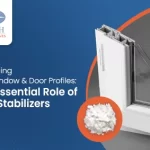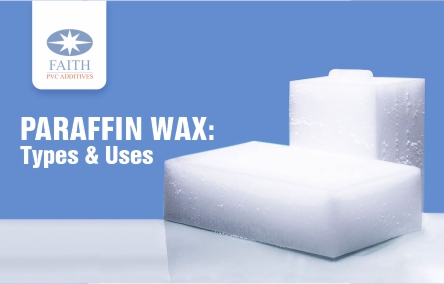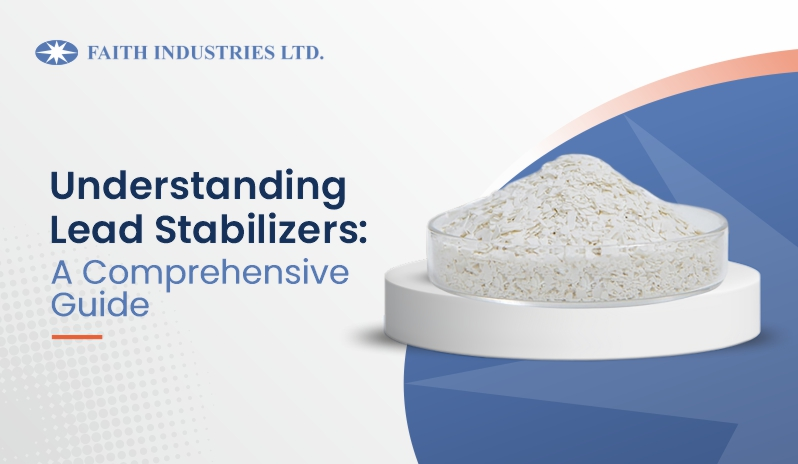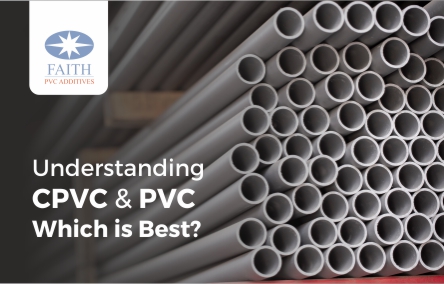India’s construction industry is undergoing a remarkable transformation, with PVC windows and doors quickly becoming the preferred choice for both residential and commercial projects. Their durability, energy efficiency, and cost-effectiveness are changing how homeowners and builders think about modern infrastructure. Behind this growth is a strong ecosystem of innovation, where every component from window profiles to stabilizers plays a crucial role. Leading every step of this evolution is India’s chemical and additives industry, especially companies like a trusted PVC stabilizer manufacturer, which ensure that PVC products deliver the performance and sustainability that today’s market demands.
Market Size and Growth of PVC Windows and Doors in India
The Indian PVC windows and doors market is entering a rapid growth phase. Valued at USD 17.36 billion in 2024, it is projected to reach USD 27.17 billion by 2030, growing at a CAGR of 7.6–11%. This growth outpaces the global fenestration industry, where average CAGR hovers around 5–6%.
Adoption in India began in the 1980s, when PVC was seen as a premium alternative to wood and aluminum. Today, rising demand from urban housing, commercial real estate, and government-backed infrastructure projects has pushed PVC into the mainstream.
Currently, the market is dominated by residential projects (especially mid-income housing), but commercial adoption is also accelerating as builders seek durable, energy-efficient, and low-maintenance solutions.
Why PVC Outperforms Wood and Aluminum in India’s Harsh Climate
India’s geography covers five major climatic zones hot-dry, humid, composite, temperate, and cold. Each region poses unique challenges for construction materials, and this is where PVC windows and doors have proven to be a superior choice compared to wood and aluminum.
Hot & Dry Regions
- The Challenge: Aluminum expands and contracts under high heat, leading to gaps and reduced sealing efficiency. Wood cracks and fades under intense sunlight.
- PVC Advantage: PVC has low thermal conductivity and dimensional stability, ensuring that windows and doors maintain their shape even in 45–48°C summers.
- Fresh Insight: Studies from desert cities like Jodhpur show that households with PVC windows experience 4–6°C lower indoor temperature fluctuations compared to aluminum installations.
Humid & Coastal Regions
- The Challenge: Wood absorbs moisture, causing swelling, rot, and termite attacks. Aluminum corrodes in salt-laden air.
- PVC Advantage: PVC is naturally resistant to moisture, salt, and termites, making it ideal for coastal and tropical climates.
- Fresh Insight: In Chennai’s coastal belt, PVC profiles have been found to last 2–3 times longer than aluminum, reducing replacement and maintenance costs significantly.
Composite Zones
- The Challenge: Extreme temperature swings—scorching summers above 45°C and cold winters close to 0°C—put stress on window systems.
- PVC Advantage: Multi-chambered PVC profiles provide insulation in both hot and cold weather, helping to cut cooling and heating costs.
- Fresh Insight: According to IGBC (Indian Green Building Council), uPVC windows with double glazing can cut cooling loads by up to 40% in composite climates like Delhi.
Cold Regions
- The Challenge: Heat loss is a major concern, especially in hilly and cold states. Traditional wooden windows shrink and warp, creating air gaps.
- PVC Advantage: PVC’s insulation properties and tight sealing reduce heat loss, keeping interiors warmer for longer.
- Fresh Insight: Builders in Himachal Pradesh report that PVC windows help reduce reliance on room heating systems by 15–20% during peak winters.
How PVC Windows Reduce Construction and Maintenance Costs
Affordable Pricing
PVC windows and doors are competitively priced at ₹250–₹800 per square foot, compared to wooden doors at ₹500–₹1,500 per square foot. This price advantage makes PVC accessible to the growing middle class while offering premium performance.
Long-Term Value
- Low maintenance: Simple cleaning is enough; no painting or varnishing is needed.
- Durability: Resistant to termites, rust, and moisture damage.
- Energy savings: Reduced cooling and heating costs over time.
When considering total cost of ownership, PVC solutions clearly outperform wood and aluminum.
Why India’s Growing Middle Class Prefers PVC Windows and Doors
India’s middle class, expected to reach 600 million people by 2030, is a key driver of PVC demand. Rising incomes, urban migration, and modern lifestyle aspirations are fueling the shift toward materials that are durable, stylish, and low maintenance.
Not only metros but also Tier 2 and Tier 3 cities are seeing a surge in PVC adoption. Affordable housing, mid-income housing projects, and commercial infrastructure are further accelerating the demand for stabilizer for window profile and related PVC-based solutions.
Government Initiatives and Policy Support
Smart Cities Mission
The Smart Cities Mission, launched in 2015 with over ₹2 trillion allocated, has promoted sustainable infrastructure. PVC’s energy efficiency and durability align well with this initiative. Recently, 12 new smart industrial cities have been approved, creating even greater demand for advanced building materials.
Infrastructure Push
Through the National Infrastructure Pipeline (NIP), India plans to invest over $120 billion in infrastructure within five years. This will directly boost demand for materials like PVC that are modern, efficient, and low-maintenance.
Regulatory Enforcement
The Bureau of Indian Standards (BIS) and Quality Control Orders (QCOs) are tightening controls on substandard imports. This benefits trusted domestic players such as pvc additives manufacturer, ensuring only safe, high-quality products reach the market.
Sustainability and Environmental Considerations
Eco-Friendly Advantages
PVC offers multiple sustainability benefits:
- Fully recyclable material, supporting circular economy goals.
- Lower carbon footprint through reduced energy use.
- Longer lifespan, resulting in fewer replacements and less waste.
Industry Innovation
The PVC industry is transitioning to safer, eco-friendly practices, including the adoption of calcium zinc stabilizer for pvc. This shift away from lead-based options reflects environmental responsibility. As demand for Cazn stabilizer grows, companies offering Cazn Stabiliser for window profile are becoming key enablers of sustainable construction in India.
Market Challenges and Supply Dynamics
Quality Concerns
Substandard imports, particularly from China, have raised concerns due to harmful chemical content like high RVCM levels. Stricter BIS enforcement is addressing this, ensuring safer market conditions for domestic manufacturers.
Supply-Demand Gap
India currently imports around 60% of its PVC requirements. Although new domestic capacities are expected by 2027, imports will continue to play a role in balancing demand.
Regional Dynamics
North India leads in adoption due to rapid urbanization and diverse climate challenges. However, Tier 2 and Tier 3 cities are now witnessing growing uptake as aspirations for modern housing spread across the country.
Future of PVC windows and doors
The demand for PVC windows and doors is expected to accelerate as India pushes toward sustainable urban development, affordable housing, and energy-efficient construction. With architects and builders seeking long-lasting, low-maintenance solutions, PVC will remain a preferred choice in both residential and commercial projects.
Another driver of growth is the shift towards eco-friendly formulations, where manufacturers are replacing traditional lead stabilizers with safer alternatives such as calcium zinc stabilizer for PVC. This transition not only addresses environmental concerns but also enhances the material’s appeal in projects aligned with green building standards.
As demand grows, collaboration with a reliable PVC additives manufacturer becomes critical for ensuring consistent quality and compliance with Indian and global standards. Manufacturers who provide advanced solutions like CaZn stabiliser for window profile are helping fabricators meet durability and weather-resistance requirements without compromising sustainability.
The future of the industry also depends on regulatory compliance and innovation. With BIS and QCO norms becoming stricter, only those aligned with high-quality production and advanced stabilizer technology will thrive. This creates opportunities for trusted PVC stabilizer manufacturers to expand their role in the fenestration industry while supporting India’s rapid urbanization and housing boom.
PVC windows and doors are no longer just an alternative they are a mainstream solution reshaping India’s construction landscape. Offering weather resistance, cost efficiency, energy savings, and sustainability, PVC aligns perfectly with modern India’s housing and infrastructure needs.
As government programs push for smart and sustainable cities, and consumers demand durable, low-maintenance solutions, PVC will continue to gain popularity. For builders, architects, and homeowners, this material is not just a trend but a long-term investment in quality and efficiency.












